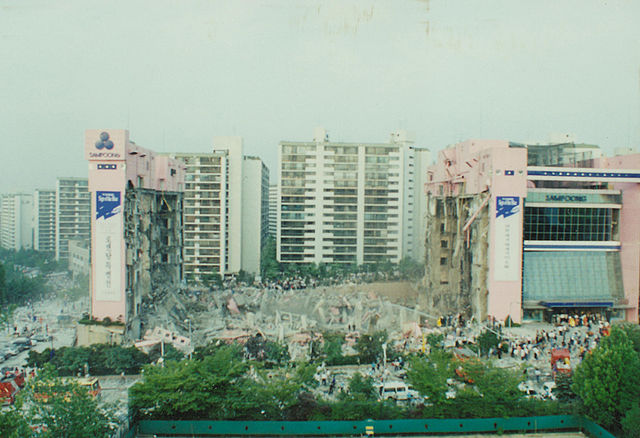The Sampoong Department Store collapse, which occurred on June 29, 1995, in Seoul, South Korea, remains one of the deadliest structural failures in modern history. The tragedy claimed 502 lives, injured nearly 1,000, and left an indelible mark on the field of structural engineering. This catastrophic event serves as a sobering reminder of the critical importance of proper design, construction, and maintenance practices.
Background of the Collapse
The Sampoong Department Store was a five-story luxury retail complex built in 1989. Originally intended to be an apartment complex, the building’s design was changed mid-construction to accommodate its new purpose. This significant alteration introduced design flaws, including reduced structural support for escalators and heavy loads that exceeded the building’s capacity.
In the weeks leading up to the collapse, cracks began to appear in the ceiling of the top floor. Instead of addressing the issue with proper structural assessments and repairs, the building’s owners chose to keep the store operational, prioritizing revenue over safety. On the day of the collapse, the roof caved in, causing all five floors to pancake, trapping and killing hundreds of people inside.
Key Lessons Learned
1. Prioritize Structural Integrity Over Cost or Convenience
One of the main factors contributing to the collapse was the decision to alter the building’s original design to maximize commercial space. These changes compromised the structure’s load-bearing capacity, demonstrating the dangers of prioritizing aesthetics or functionality over safety.
2. The Importance of Adhering to Building Codes
Building codes are designed to ensure the safety and durability of structures. In the case of Sampoong, non-compliance with these codes, including unauthorized design changes and substandard construction practices, was a major contributing factor to the disaster. Strict adherence to building codes is essential to prevent similar tragedies.
3. Regular Inspections Are Critical
The visible cracks that appeared before the collapse were clear warning signs of structural distress. However, the lack of timely inspections and maintenance allowed the problem to worsen. Regular inspections and prompt repairs are vital to identifying and addressing structural vulnerabilities before they escalate.
4. Ethical Decision-Making in Engineering
The Sampoong collapse highlights the ethical responsibility of engineers, architects, and building owners. Ignoring safety warnings, cutting corners, and prioritizing profits over lives are grave ethical breaches that can have devastating consequences. Structural engineering professionals must always prioritize safety above all else.
Impact on Structural Engineering
The Sampoong Department Store collapse served as a wake-up call for the construction and engineering industries worldwide. In South Korea, it led to stricter building codes, more rigorous inspections, and greater accountability for developers and contractors. Globally, it became a case study in structural failure, underscoring the importance of ethical practices, proper design, and ongoing maintenance.
The disaster collapse was a preventable tragedy that highlighted critical flaws in design, construction, and decision-making. By learning from this disaster, structural engineers and building professionals can reinforce their commitment to safety, ensuring that such failures are never repeated. The lessons from Sampoong remind us that structural integrity, ethical practices, and proactive maintenance are non-negotiable in creating a safer built environment.










